Ohio's 6th congressional district
| Ohio's 6th congressional district | |||
|---|---|---|---|
 Ohio's 6th congressional district - since January 3, 2013. | |||
| Representative |
| ||
| Distribution |
| ||
| Population (2019) | 698,284[2] | ||
| Median household income | $52,442[3] | ||
| Ethnicity |
| ||
| Cook PVI | R+24[4] | ||
Ohio's 6th congressional district is represented by Representative Bill Johnson (R-OH). This district runs along the southeast side of the state, bordering Kentucky, West Virginia, and Pennsylvania. It stretches from rural Lucasville through Athens and several older Ohio River industrial towns all the way to the Youngstown city limits.[5]
History[]
When Robert McEwen was first elected in 1980, the Sixth District of Ohio consisted of Adams, Brown, Clinton, Fayette, Highland, Pickaway, Pike, Scioto, and Ross Counties plus Clermont County outside the city of Loveland, Harrison Township in Vinton County and the Warren County townships of Clearcreek, Deerfield, Hamilton, Harlan, Massie, Salem, and Wayne.[6] At that time, The Washington Post described the Sixth as "a fail-safe Republican district."[7]
The Ohio General Assembly redrew the Sixth District following the results of the 1980 Census. The boundaries from 1983 to 1987 included all of Adams, Clinton, Fayette, Highland, Hocking, Jackson, Pike, Ross, Scioto, Vinton and Warren Counties, plus Waterloo and York Townships in Athens County; Wayne Township in Clermont County; Concord, Jasper, Marion, Perry, Union, and Wayne Townships in Fayette County; and Washington Township and the Cities of Miamisburg and West Carrollton in Montgomery County.[8]
Beginning with the 100th Congress in 1987, adjustments were made by the legislature to the boundaries; reapportionment between censuses is unusual in American politics. A small part of the Montgomery County territory was detached, as were parts of Fayette County in Washington Court House in Union Township and the townships of Jasper and Marion. Part of Brown County was added, Jackson and Eagle Townships. These were the boundaries for the rest of McEwen's service in Congress.[9]
The district was largely rural and agricultural with no large cities. One of the major industries was the United States Department of Energy's Portsmouth Gaseous Diffusion Plant at Piketon, which manufactured uranium for nuclear weapons. The district was 97 per cent white with a median household income of $21,761.[10]
In 1992, the district was altered significantly to accommodate Ohio's loss of two House seats in redistricting. The state legislature anticipated that Clarence Miller of the neighboring Tenth District would retire, and thus combined the southern end of his district (which included Athens, Gallipolis, and Ironton) with most of the area previously represented by McEwen. Although the district did not include Miller's hometown of Lancaster, Miller decided not to retire and instead challenged McEwen in the Sixth District primary in 1992. The campaign was bitter, and McEwen eked out only a narrow victory. In November, McEwen was upset by Democrat Ted Strickland, a prison psychologist. Strickland himself was defeated in 1994 by Republican Frank Cremeans, but won the seat back in 1996.
For 2002 the district was shifted dramatically eastward. At the same time, it effectively ended the career of James Traficant in the neighboring 17th District by placing his hometown of Poland into the 6th. Traficant opted to run in his old district and lost. The district currently includes all of Belmont, Carroll, Columbiana, Gallia, Guernsey, Jackson, Jefferson, Lawrence, Meigs, Monroe, Noble and Washington counties, and portions of Athens, Mahoning, Muskingum, Scioto and Tuscarawas counties.
In 2010, Republican Bill Johnson defeated incumbent Democrat Charles Wilson, returning the seat Republican for the first time since 1997. Following the 2010 United States Census, the bounds of the sixth district were changed again as Ohio lost two seats in Congress.[11]
In recent years and like much of coal country, the district has swung decidedly toward the Republican Party at local, state and national levels. After being a dead heat in presidential elections in 2000, 2004 and 2008, it swung hard to Donald Trump in 2016; Trump carried it with 69 percent of the vote over Hillary Clinton, his best showing in the state. Trump won it almost as easily over Joe Biden in 2020, with 72 percent of the vote, again his best showing in Ohio.
List of members representing the district[]
| Member | Party | Year(s) | Cong ress |
Electoral history | |
|---|---|---|---|---|---|
| District created March 4, 1813 | |||||
| Vacant | March 4, 1813 – April 20, 1813 |
13th | Member-elect John Stark Edwards died before commencement of term. | ||
 Reasin Beall |
Democratic-Republican | April 20, 1813 – June 7, 1814 |
Elected to finish Edwards's term. Resigned. | ||
| Vacant | June 7, 1814 – October 11, 1814 |
||||
| David Clendenin | Democratic-Republican | October 11, 1814 – March 3, 1817 |
13th 14th |
Elected to finish Beall's term. Also elected the same day in 1814 to the next term. Lost re-election. | |
 Peter Hitchcock |
Democratic-Republican | March 4, 1817 – March 3, 1819 |
15th | Elected in 1816. Lost re-election. | |
 John Sloane |
Democratic-Republican | March 4, 1819 – March 3, 1823 |
16th 17th |
Elected in 1816. Re-elected in 1818. Re-elected in 1820. Redistricted to the 12th district. | |
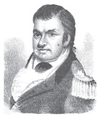 Duncan McArthur |
Democratic-Republican | March 4, 1823 – March 3, 1825 |
18th | Elected in 1822. Lost re-election. | |
| John Thomson | Jacksonian | March 4, 1825 – March 3, 1827 |
19th | Elected in 1824. Lost re-election. | |
 William Creighton Jr. |
Anti-Jacksonian | March 4, 1827 – ????, 1828 |
20th | Elected in 1826. Resigned to when appointed U.S. District Court for the District of Ohio. | |
| Vacant | ????, 1828 – December 19, 1828 |
||||
| Francis Swaine Muhlenberg | Anti-Jacksonian | December 19, 1828 – March 3, 1829 |
Elected to finish Creighton's term. Was not elected to the next term. | ||
 William Creighton Jr. |
Anti-Jacksonian | March 4, 1829 – March 3, 1833 |
21st 22nd |
Elected in 1828. Re-elected in 1830. [data unknown/missing] | |
 Samuel Finley Vinton |
Anti-Jacksonian | March 4, 1833 – March 3, 1835 |
23rd 24th |
Redistricted from the 7th district and re-elected in 1832. Re-elected in 1834. [data unknown/missing] | |
| Whig | March 4, 1835 – March 3, 1837 | ||||
| Calvary Morris | Whig | March 4, 1837 – March 3, 1843 |
25th 26th 27th |
Elected in 1836. Re-elected in 1838. Re-elected in 1840. [data unknown/missing] | |
| Henry St. John | Democratic | March 4, 1843 – March 3, 1847 |
28th 29th |
Elected in 1843. Re-elected in 1844. [data unknown/missing] | |
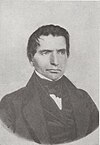 Rodolphus Dickinson |
Democratic | March 4, 1847 – March 20, 1849 |
30th 31st |
Elected in 1846. Re-elected in 1848. Died. | |
| Vacant | March 20, 1849 – December 3, 1849 |
31st | |||
| Amos E. Wood | Democratic | December 3, 1849 – November 19, 1850 |
Elected to finish Dickinson's term. Died. | ||
| Vacant | November 19, 1850 – January 7, 1851 |
||||
| John Bell | Whig | January 7, 1851 – March 3, 1851 |
Elected to finish Wood's term. [data unknown/missing] | ||
| Frederick W. Green | Democratic | March 4, 1851 – March 3, 1853 |
32nd | Elected in 1850. Redistricted to the 9th district. | |
| Andrew Ellison | Democratic | March 4, 1853 – March 3, 1855 |
33rd | Elected in 1852. [data unknown/missing] | |
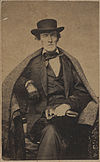 Jonas R. Emrie |
Opposition | March 4, 1855 – March 3, 1857 |
34th | Elected in 1854. [data unknown/missing] | |
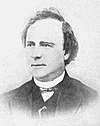 Joseph R. Cockerill |
Democratic | March 4, 1857 – March 3, 1859 |
35th | Elected in 1856. [data unknown/missing] | |
| William Howard | Democratic | March 4, 1859 – March 3, 1861 |
36th | Elected in 1858. [data unknown/missing] | |
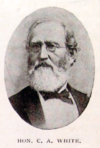 Chilton A. White |
Democratic | March 4, 1861 – March 3, 1865 |
37th 38th |
Elected in 1860. Re-elected in 1862. [data unknown/missing] | |
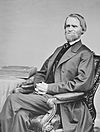 Reader W. Clarke |
Republican | March 4, 1865 – March 3, 1869 |
39th 40th |
Elected in 1864. Re-elected in 1866. [data unknown/missing] | |
| John Armstrong Smith | Republican | March 4, 1869 – March 3, 1873 |
41st 42nd |
Elected in 1868. Re-elected in 1870. [data unknown/missing] | |
 Isaac R. Sherwood |
Republican | March 4, 1873 – March 3, 1875 |
43rd | Elected in 1872. [data unknown/missing] | |
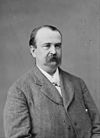 Frank H. Hurd |
Democratic | March 4, 1875 – March 3, 1877 |
44th | Elected in 1874. [data unknown/missing] | |
 Jacob Dolson Cox |
Republican | March 4, 1877 – March 3, 1879 |
45th | Elected in 1876. [data unknown/missing] | |
 William D. Hill |
Democratic | March 4, 1879 – March 3, 1881 |
46th | Elected in 1878. [data unknown/missing] | |
| James M. Ritchie | Republican | March 3, 1881 – March 3, 1883 |
47th | Elected in 1880. [data unknown/missing] | |
 William D. Hill |
Democratic | March 4, 1883 – March 3, 1887 |
48th 49th |
Elected in 1882. Re-elected in 1884. [data unknown/missing] | |
 Melvin M. Boothman |
Republican | March 4, 1887 – March 3, 1891 |
50th 51st |
Elected in 1886. Re-elected in 1888. [data unknown/missing] | |
 Dennis D. Donovan |
Democratic | March 4, 1891 – March 3, 1893 |
52nd | Elected in 1890. Redistricted to the 5th district. | |
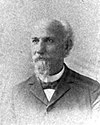 George W. Hulick |
Republican | March 4, 1893 – March 3, 1897 |
53rd 54th |
Elected in 1892. Re-elected in 1894. [data unknown/missing] | |
 Seth W. Brown |
Republican | March 4, 1897 – March 3, 1901 |
55th 56th |
Elected in 1896. Re-elected in 1898. [data unknown/missing] | |
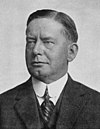 Charles Q. Hildebrant |
Republican | March 4, 1901 – March 3, 1905 |
57th 58th |
Elected in 1900. Re-elected in 1902. [data unknown/missing] | |
 Thomas E. Scroggy |
Republican | March 4, 1905 – March 3, 1907 |
59th | Elected in 1904. [data unknown/missing] | |
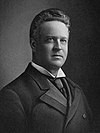 Matthew Denver |
Democratic | March 4, 1907 – March 3, 1913 |
60th 61st 62nd |
Elected in 1906. Re-elected in 1908. Re-elected in 1910. [data unknown/missing] | |
 Simeon D. Fess |
Republican | March 4, 1913 – March 3, 1915 |
63rd | Elected in 1912. Redistricted to the 7th district. | |
 Charles Cyrus Kearns |
Republican | March 4, 1915 – March 3, 1931 |
64th 65th 66th 67th 68th 69th 70th 71st |
Elected in 1914. Re-elected in 1916. Re-elected in 1918. Re-elected in 1920. Re-elected in 1922. Re-elected in 1924. Re-elected in 1926. Re-elected in 1928. Lost re-election. | |
 James G. Polk |
Democratic | March 3, 1931 – January 3, 1941 |
72nd 73rd 74th 75th 76th |
Elected in 1930. Re-elected in 1932. Re-elected in 1934. Re-elected in 1936. Re-elected in 1938. Retired. | |
 Jacob E. Davis |
Democratic | January 3, 1941 – January 3, 1943 |
77th | Elected in 1940. Lost re-election. | |
 Edward Oscar McCowen |
Republican | January 3, 1943 – January 3, 1949 |
78th 79th 80th |
Elected in 1942. Re-elected in 1944. Re-elected in 1946. Lost re-election. | |
 James G. Polk |
Democratic | January 3, 1949 – April 28, 1959 |
81st 82nd 83rd 84th 85th 86th |
Elected in 1948. Re-elected in 1950. Re-elected in 1952. Re-elected in 1954. Re-elected in 1956. Re-elected in 1958. Died. | |
| Vacant | April 28, 1959 – November 8, 1960 |
86th | |||
| Ward Miller | Republican | November 8, 1960 – January 3, 1961 |
Elected to finish Polk's term. Was not a candidate for the next term. | ||
 Bill Harsha |
Republican | January 3, 1961 – January 3, 1981 |
87th 88th 89th 90th 91st 92nd 93rd 94th 95th 96th |
Elected in 1960. Re-elected in 1962. Re-elected in 1964. Re-elected in 1966. Re-elected in 1968. Re-elected in 1970. Re-elected in 1972. Re-elected in 1974. Re-elected in 1976. Re-elected in 1978. Retired. | |
 Bob McEwen |
Republican | January 3, 1981 – January 3, 1993 |
97th 98th 99th 100th 101st 102nd |
Elected in 1980. Re-elected in 1982. Re-elected in 1984. Re-elected in 1986. Re-elected in 1988. Re-elected in 1990. Lost re-election. | |
 Ted Strickland |
Democratic | January 3, 1993 – January 3, 1995 |
103rd | Elected in 1992. Lost re-election. | |
 Frank Cremeans |
Republican | January 3, 1995 – January 3, 1997 |
104th | Elected in 1994. Lost re-election. | |
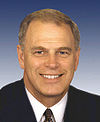 Ted Strickland |
Democratic | January 3, 1997 – January 3, 2007 |
105th 106th 107th 108th 109th |
Elected in 1996. Re-elected in 1998. Re-elected in 2000. Re-elected in 2002. Re-elected in 2004. Retired to become Governor of Ohio. | |
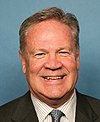 Charlie Wilson |
Democratic | January 3, 2007 – January 3, 2011 |
110th 111th |
Elected in 2006. Re-elected in 2008. Lost re-election. | |
 Bill Johnson |
Republican | January 3, 2011 – present |
112th 113th 114th 115th 116th 117th |
Elected in 2010. Re-elected in 2012. Re-elected in 2014. Re-elected in 2016. Re-elected in 2018. Re-elected in 2020. | |
Recent election results[]
The following chart shows historic election results.
| Year | Democratic | Republican | Other |
|---|---|---|---|
| 1920 | : 30,903 | √ Charles C. Kearns (Incumbent): 38,044 | — |
| 1922 | : 28,939 | √ Charles C. Kearns (Incumbent): 32,416 | — |
| 1924 | :[a] 29,283 | √ Charles C. Kearns (Incumbent): 33,064 | — |
| 1926 | :[a] 24,730 | √ Charles C. Kearns (Incumbent): 27,688 | — |
| 1928 | George D. Nye: 33,020 | √ Charles C. Kearns (Incumbent): 43,519 | — |
| 1930 | √ James G. Polk: 37,158 | Charles C. Kearns (Incumbent): 33,300 | — |
| 1932 | √ James G. Polk (Incumbent): 50,913 | : 39,668 | — |
| 1934 | √ James G. Polk (Incumbent): 42,340 | : 38,538 | Mark A. Crawford: 312 |
| 1936 | √ James G. Polk (Incumbent): 54,904 | : 45,733 | — |
| 1938 | √ James G. Polk (Incumbent): 43,646 | : 42,847 | — |
| 1940 | √ Jacob E. Davis: 52,769 | : 48,257 | — |
| 1942 | Jacob E. Davis (Incumbent): 31,793 | √ Edward O. McCowen: 33,171 | — |
| 1944 | : 42,167 | √ Edward O. McCowen (Incumbent): 45,284 | — |
| 1946 | : 33,013 | √ Edward O. McCowen (Incumbent): 39,992 | — |
| 1948 | √ James G. Polk: 46,944 | Edward O. McCowen (Incumbent): 41,402 | — |
| 1950 | √ James G. Polk (Incumbent): 40,335 | Edward O. McCowen: 38,996 | — |
| 1952 | √ James G. Polk (Incumbent): 67,220 | : 66,896 | — |
| 1954 | √ James G. Polk (Incumbent): 54,044 | : 49,531 | — |
| 1956 | √ James G. Polk (Incumbent): 72,229 | : 60,300 | — |
| 1958 | √ James G. Polk (Incumbent): 76,566 | : 46,924 | — |
| 1960 | : 65,045 | √ Bill Harsha: 80,124 | — |
| 1960 s[b] | : 61,713 | √ Ward Miller: 76,520 | — |
| 1962 | : 47,737 | √ Bill Harsha (Incumbent): 72,743 | — |
| 1964 | : 57,223 | √ Bill Harsha (Incumbent): 86,015 | — |
| 1966 | : 35,345 | √ Bill Harsha (Incumbent): 74,847 | — |
| 1968 | : 40,964 | √ Bill Harsha (Incumbent): 107,289 | — |
| 1970 | : 39,265 | √ Bill Harsha (Incumbent): 82,772 | — |
| 1972 | — | √ Bill Harsha (Incumbent): 128,394 | — |
| 1974 | : 42,316 | √ Bill Harsha (Incumbent): 93,400 | — |
| 1976 | Ted Strickland: 67,067 | √ Bill Harsha (Incumbent): 107,064 | — |
| 1978 | Ted Strickland: 46,313 | √ Bill Harsha (Incumbent): 85,592 | — |
| 1980 | Ted Strickland: 84,235 | √ Bob McEwen: 101,288 | — |
| 1982 | : 63,435 | √ Bob McEwen (Incumbent): 92,135 | — |
| 1984 | : 52,727 | √ Bob McEwen (Incumbent): 150,101 | — |
| 1986 | Gordon R. Roberts: 42,155 | √ Bob McEwen (Incumbent): 106,354 | Amos Seeley: 2,829 |
| 1988 | Gordon R. Roberts: 52,635 | √ Bob McEwen (Incumbent): 152,235 | — |
| 1990 | Ray Mitchell: 47,415 | √ Bob McEwen (Incumbent): 117,220 | — |
| 1992 | √ Ted Strickland: 122,720 | Bob McEwen (Incumbent):[c] 119,252 | — |
| 1994 | Ted Strickland (Incumbent): 87,861 | √ Frank Cremeans: 91,263 | — |
| 1996 | √ Ted Strickland: 118,003 | Frank Cremeans (Incumbent): 111,907 | — |
| 1998 | √ Ted Strickland (Incumbent): 102,852 | Nancy P. Hollister: 77,711 | — |
| 2000 | √ Ted Strickland (Incumbent): 138,849 | Mike Azinger: 96,966 | Kenneth R. MacCutcheon (L): 4,759 |
| 2002 | √ Ted Strickland (Incumbent): 113,972 | : 77,643 | — |
| 2004 | √ Ted Strickland (Incumbent): 223,884 | None | John Stephen Luchansky (Write-in): 145 |
| 2006 | √ Charles A. Wilson Jr.: 131,322 | Chuck Blasdel: 80,705 | — |
| 2008 | √ Charles A. Wilson Jr. (Incumbent): 176,330 | : 92,968 | Dennis Spisak (G): 13,812 |
| 2010 | Charles A. Wilson Jr. (Incumbent): 91,039 | √ Bill Johnson: 101,580 | Richard Cadle (C): 4,963 Martin Elass (L): 4,424 |
| 2012[12] | Charles A. Wilson Jr.: 144,444 | √ Bill Johnson (Incumbent): 164,536 | |
| 2014 | Jennifer Garrison: 73,561 | √ Bill Johnson (Incumbent): 111,026 | Dennis Lambert (G): 6,065 |
| 2016 | : 88,780 | √ Bill Johnson (Incumbent): 213,975 | |
| 2018 | Shawna Roberts: 76,716 | √ Bill Johnson (Incumbent): 172,774 | — |
| 2020 | Shawna Roberts: 85,661 | √ Bill Johnson (Incumbent): 249,130 |
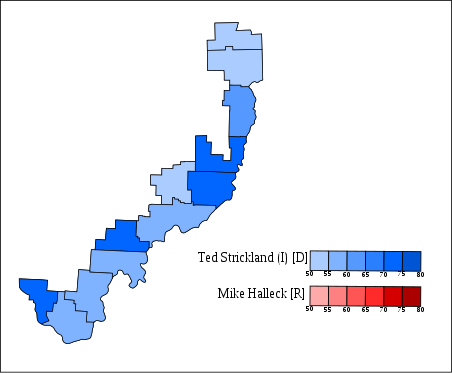
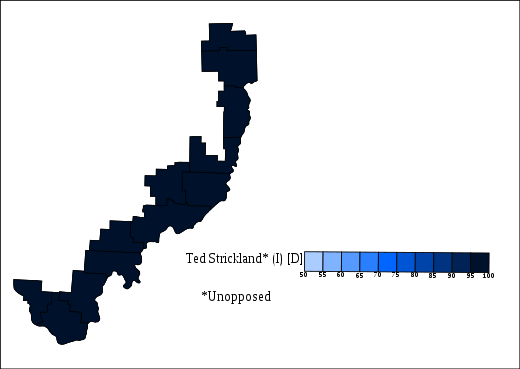



Competitiveness[]
Election results from presidential races:
| Year | Office | Results |
|---|---|---|
| 2000 | President | George W. Bush 49 - Al Gore 47% |
| 2004 | President | George W. Bush 51 - John Kerry 49% |
| 2008 | President | John McCain 50 - Barack Obama 48% |
| 2012 | President | Mitt Romney 55 - Barack Obama 43% |
| 2016 | President | Donald Trump 69 - Hillary Clinton 27% |
| 2020 | President | Donald Trump 72 - Joe Biden 26% |
Historical district boundaries[]
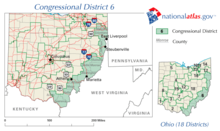
See also[]
Notes[]
- ^ a b Probable error in records: , the Democratic nominee in 1926, and , the Democratic nominee in 1924, are most probably the same person. Which name is correct is unknown.
- ^ A separate, special election was held to fill out Polk's unexpired term. Miller, the winner of this election, served the remainder of 1960, until Harsha's term began in 1961.
- ^ Redistricting following the 1990 census resulted in putting two Republican incumbents, Bob McEwen and Clarence E. Miller (incumbent in the 10th District), in the new Sixth District. McEwen defeated Miller in a bitterly fought Republican primary election in 1992.
References[]
- ^ https://www.census.gov/geo/maps-data/data/cd_state.html
- ^ "My Congressional District".
- ^ "My Congressional District".
- ^ "Introducing the 2021 Cook Political Report Partisan Voter Index". The Cook Political Report. April 15, 2021. Retrieved April 15, 2021.
- ^ http://www.ohiofreepress.com/2010/ohio-congressional-districts-map/
- ^ Ohio. Secretary of State. Official Roster of Federal, State, and County Officers and Departmental Information for 1991-1992. Columbus, Ohio: The Secretary, 1991. 330-335.
- ^ "Election 80: New Faces in the House". The Washington Post. November 23, 1980. A15.
- ^ Ohio. Secretary of State. Official Roster of Federal, State, and County Officers and Departmental Information for 1991-1992. Columbus, Ohio: The Secretary, 1991. 330-335; United States. Congress. Joint Committee on Printing. 1987-1988 Official Congressional Directory, 100th Congress. Duncan Nystrom, editor. Washington, D.C.: United States Government Printing Office, 1987.
- ^ Ohio. Secretary of State. Official Roster of Federal, State, and County Officers and Departmental Information for 1991-1992. Columbus, Ohio: The Secretary, 1991. 330-335; United States. Congress. Joint Committee on Printing. 1991-1992 Official Congressional Directory, 102d Congress. Duncan Nystrom, editor. S. Pub. 102-4. Washington, D.C.: United States Government Printing Office, 1991.
- ^ Michael Barone and Grant Ujifusa. The Almanac of American Politics, 1994. Washington, D.C.: National Journal, 1993. ISBN 0-89234-058-4.
- ^ "APPORTIONMENT POPULATION AND NUMBER OF REPRESENTATIVES, BY STATE: 2010 CENSUS" (PDF). US Census. December 21, 2010. Retrieved December 21, 2010.
- ^ "2012 Election Results". Ohio Secretary of State. Archived from the original on July 30, 2013. Retrieved July 31, 2013.
Sources[]
- Martis, Kenneth C. (1989). The Historical Atlas of Political Parties in the United States Congress. New York: Macmillan Publishing Company.
- Martis, Kenneth C. (1982). The Historical Atlas of United States Congressional Districts. New York: Macmillan Publishing Company.
- Congressional Biographical Directory of the United States 1774–present
- Congressional districts of Ohio
- Constituencies established in 1813
- 1813 establishments in Ohio
